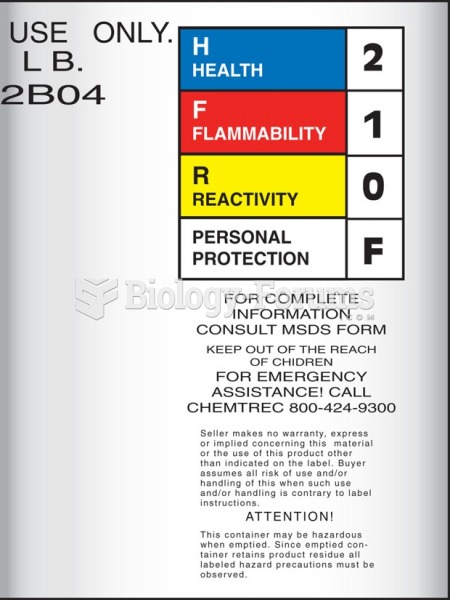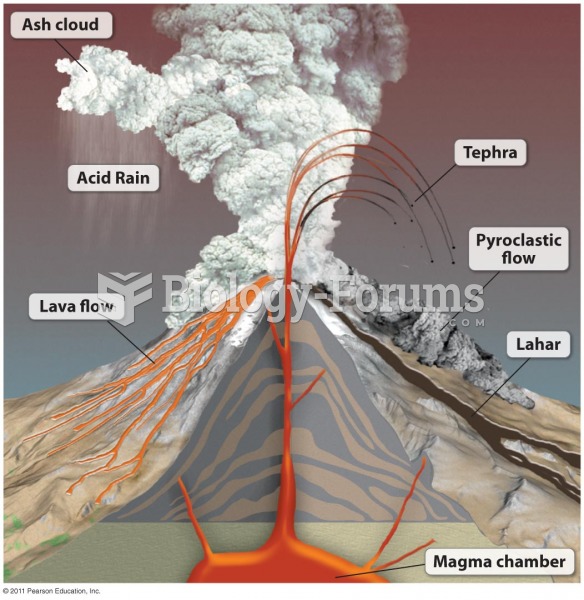|
|
|
Illness; diuretics; laxative abuse; hot weather; exercise; sweating; caffeine; alcoholic beverages; starvation diets; inadequate carbohydrate consumption; and diets high in protein, salt, or fiber can cause people to become dehydrated.
The ratio of hydrogen atoms to oxygen in water (H2O) is 2:1.
Despite claims by manufacturers, the supplement known as Ginkgo biloba was shown in a study of more than 3,000 participants to be ineffective in reducing development of dementia and Alzheimer’s disease in older people.
People with alcoholism are at a much greater risk of malnutrition than are other people and usually exhibit low levels of most vitamins (especially folic acid). This is because alcohol often takes the place of 50% of their daily intake of calories, with little nutritional value contained in it.
Medication errors are three times higher among children and infants than with adults.
 Because of the hazards of a vacuum, astronauts must wear a pressurized space suit while outside thei
Because of the hazards of a vacuum, astronauts must wear a pressurized space suit while outside thei
 MSDS labels provide an abridged version of substance hazards information and must be permanently ...
MSDS labels provide an abridged version of substance hazards information and must be permanently ...





